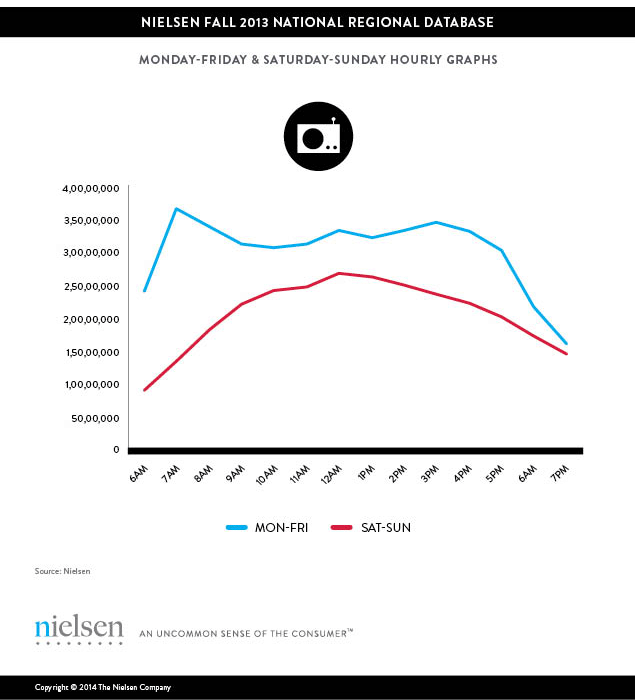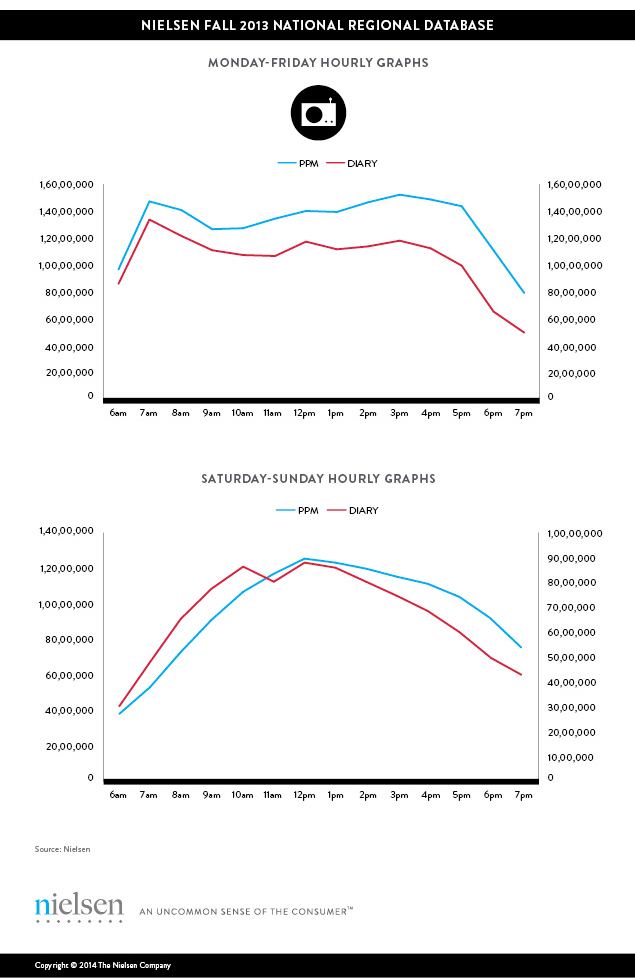Much of the radio listening among a record-high 244.4 million Americans happens away from home, by the working crowd, according to Nielsen’s second-quarter Audio Today report. On the national level, radio listening ebbs and flows over the course of the work day. But since every market in America is unique, localized influences play a role in determining how and when listeners come to the radio. To better understand how local markets can differ from the national level, we split the national audience across the portable people meter (PPM) and radio diary markets.
On the national level, the 7 a.m. hour leads the way during the Monday through Friday week, followed by 3 p.m. and noon. The national radio listening curve’s angled peaks highlight spikes during these key periods. The curve for weekend listening, on the other hand, is much more rounded, showing how the audience builds gradually until the mid-day peak and then begins to drop off at the same rate it grew.

We broke down this overall view of listening by our two types of measured markets. The following audience curves are based on the national average quarter-hour (AQH) audiences for listeners 12 and older, broken out in the 48 largest U.S. markets measured electronically by PPM, and compared to the 200-plus medium- and small-sized markets where Nielsen uses an audio diary to capture listening.

During the work week, PPM and diary listening curves both follow similar paths to the national curve, rising dramatically in the 7 a.m. hour (one of radio’s most important hours no matter where you program) and then spiking again around lunch. However, there are some key differences, especially as you head into the afternoon. Unlike the national curve, the peak of listening in PPM markets is actually the 3 p.m. hour (7 a.m. is ranked second), and that listening is significant and sustained until 6 p.m. when commuters begin to arrive at home. The diary curve, like the national curve, peaks at 7 a.m. and doesn’t have the same dramatic uplift in the afternoon.
These differences mean that the p.m. drive (3 p.m.-7 p.m.) is the most listened-to daypart across the PPM markets, while the a.m. drive (6 a.m.-10 a.m.) leads the way in diary markets. On the weekends, a similar story emerges; while both audiences peak in the 12 p.m. hour, the PPM crowd sustains their listening later into the afternoon than in diary markets.
And these subtle differences begin to play out in a much more noticeable way once you dive into local markets and begin comparing the flow of radio listening during the day. Knowing in advance when to focus your best content based on the size of your market is an important distinction to make as you study all of the nuances of the radio landscape in town. These insights are vital for radio programmers as they consider how to structure the content for their stations in order to maximize ratings during peak listening hours and minimize risk during off-peak times.



